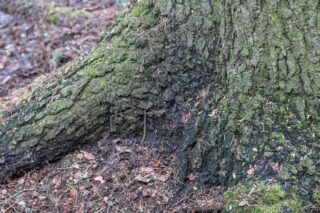The best time to make observations of flying squirrels is right now. If you find flying squirrel droppings or manage to see individuals of the species, please report your observations to the laji.fi portal and to the city’s conservation biologist Mia Honkanen (mia.honkanen@lahti.fi).
The survey conducted last spring indicates a significant decline in the number of flying squirrels in the forests of Lahti over the past decade. The number of habitats and females has clearly decreased compared to previous surveys, indicating a decline in the species.
The main reason for the decline in population is considered to be the disappearance of favorable habitats and the interruption of corridors. The flying squirrel is an endangered species.

Flying squirrels still have a stable population in the forests of Lahti
Despite the decline in the species, flying squirrels still have a stable population in the forests of Lahti.
– The presence of flying squirrels in the city’s forests indicates the good quality of the forests and their high biodiversity value, says Honkanen.
– Flying squirrels prefer old and mature spruce forests with deciduous trees for food, natural cavities for nesting, and decaying wood. These types of forests are beneficial for other species such as birds. Unfortunately, logging has destroyed the habitat of the species in a few privately owned forest areas studied in Lahti, adds Honkanen.
Mia Honkanen emphasizes that the results of the survey highlight the need to preserve and improve the habitats of flying squirrels. Repairing connectivity between habitat areas is particularly important for the conservation of flying squirrels.